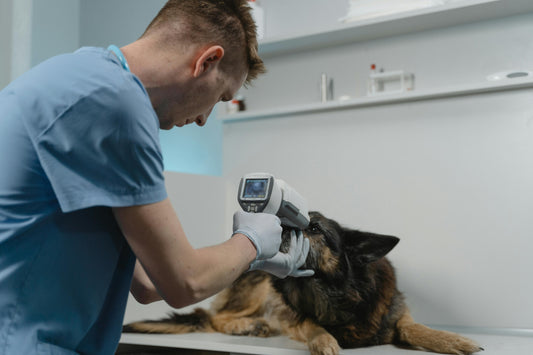Think you’ve dodged fleas just because your fur baby stays indoors? No backyard, no worries, right? Not quite. The truth is, indoor cats can get fleas, and when they do, it can turn your comfy home into a scratching nightmare – literally.
Let’s break it down: how it happens, why it matters, and how to keep your indoor kitty protected year-round.
Can Indoor Cats Get Fleas?
Yes, they absolutely can. Even if your cat has never set a paw outside, fleas can still find their way in. Fleas are hitchhikers and don’t need much of an invitation. All it takes is a single flea (or flea egg) catching a ride on your clothes, a visitor, another pet, or even sneaking in through an open window.
So next time you wonder, can an indoor cat get fleas? – the answer is 100% yes.
How Do Indoor Cats Get Fleas?
If you’re scratching your head thinking, how do indoor cats get fleas? You’re not alone.
Here are the most common ways those tiny pests make their way inside:
- Humans as taxis: You or a guest could unknowingly bring fleas into the house on clothes, shoes, or bags.
- Other pets: If you also have a dog that goes outside, they could easily carry fleas in and share the love.
- Windows and screens: Fleas can jump in from nearby infested environments, even if your windows have screens.
- Pest carriers: Rodents or wildlife (like possums) around the home can drop flea eggs that eventually find their way inside.
Fleas are survivors. Their eggs can lie dormant in carpet or furniture until the right moment hits, like your cat curling up for a nap.

Do Indoor Cats Need Flea Treatment?
It’s easy to assume that if your cat lives indoors, they don’t need flea prevention. But here’s the deal: indoor cats absolutely need flea treatment.
Fleas can cause:
- Constant itching and discomfort
- Skin infections
- Flea allergy dermatitis
- Tapeworms (from swallowing infected fleas)
- Anaemia in severe cases
And because indoor cats often have less environmental stimulation, they might obsessively scratch or groom, making flea symptoms worse and harder to spot at first.
That's why effective treatment is a simple way to protect them from a whole lot of itching (and vet bills).
What to Look for: Signs Your Indoor Cat Has Fleas
Think your cat might have picked up a few unwanted guests?
Watch for:
- Frequent scratching or biting at the skin
- Tiny black specks in their fur (aka flea dirt)
- Hair loss or scabs from excessive grooming
- Visible fleas, especially around the neck or tail
You can also use a flea comb to check for creepy crawlers or flea dirt.
Why a Single Flea Can Lead to a Full Infestation
Fleas multiply fast. A single adult flea can lay up to 50 eggs a day.
If just one flea makes its way into your home, it can kickstart an entire flea infestation, with eggs, larvae, and pupae hiding in soft furnishings, cracks in the floorboards, and yes, your cat’s bedding.
Understanding how fleas reproduce (and how long they live) can help you stay ahead of the problem.
The Best Way to Prevent Fleas on Indoor Cats
You don’t have to wait until fleas show up to act. Prevention is key, and much easier than dealing with an infestation.
Here's how to help keep your indoor cat flea-free:
- Use a vet-recommended flea treatment regularly (even year-round!)
- Vacuum floors and furniture weekly
- Wash pet bedding often
- Monitor for signs of fleas, especially during the Australian flea season
If you're wondering about natural options, some pet parents use food-grade diatomaceous earth in carpets or cat-safe sprays, but always check with your vet first. Learn more about whether diatomaceous earth kills fleas here.
Fleas vs. Ticks: Know the Difference
Not every bug is a flea.
Ticks are another common parasite that can also hitch a ride indoors. They look different, attach differently, and carry different risks. Knowing the difference between a tick bite vs a flea bite can help you treat the problem fast and effectively.
And yes, indoor cats can get ticks too, especially if other pets go outside.
If you ever do spot a tick, be sure to follow safe steps for how to get ticks off a cat.
Can House Cats Get Fleas Year-Round?
While fleas thrive in warm weather, your home’s temperature-controlled environment can keep them going all year. That means even in winter, your indoor cat is still at risk. If you thought flea prevention was only a summer thing, think again.
Keeping up with regular flea control can save you the stress of a surprise infestation and keep your fur baby comfy no matter the season.
Keep Your Indoor Cat Safe, Comfy, and Flea-Free
Your cat might not go outside, but that doesn’t mean fleas won’t come to them. Regular flea prevention, smart habits, and knowing the signs early can make all the difference.
The bottom line on “Can house cats get fleas?” Yes.
Want to stock up on trusted treatments and helpful grooming tools? Explore our curated range today, and give your cat the healthy, itch-free life they deserve.




